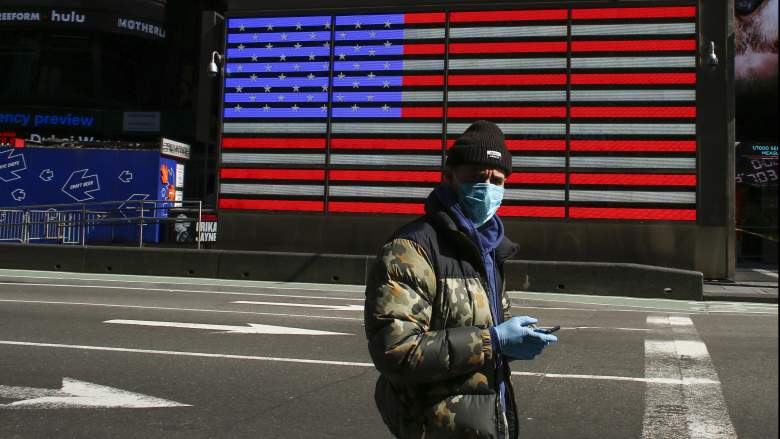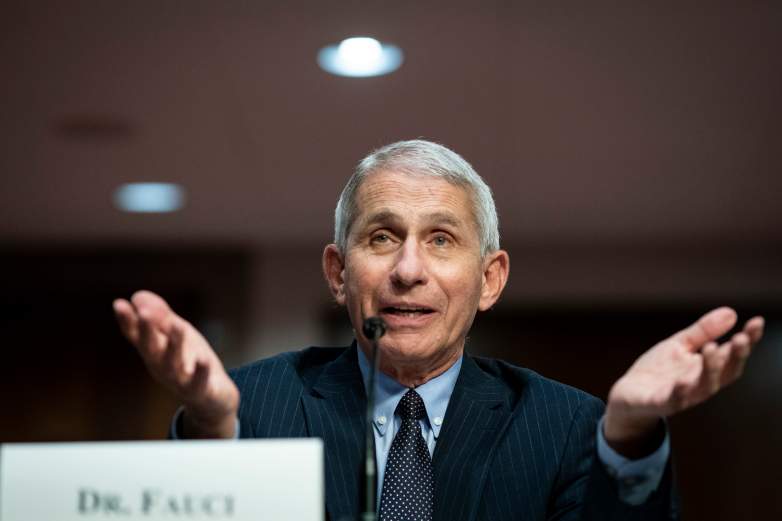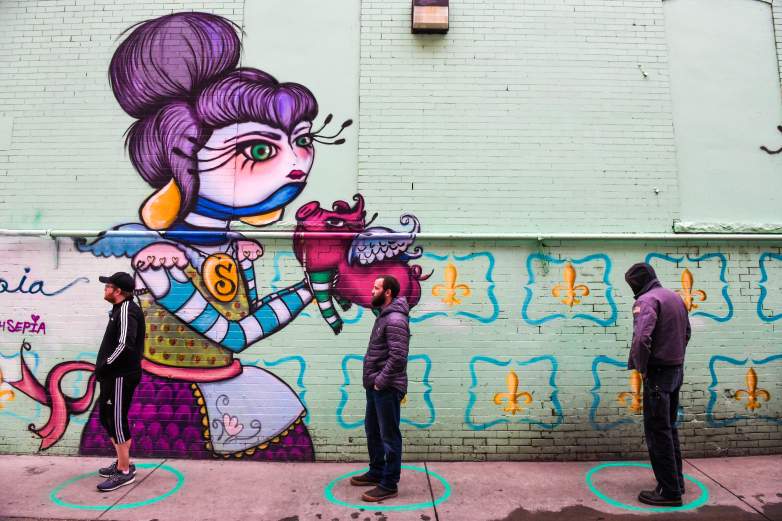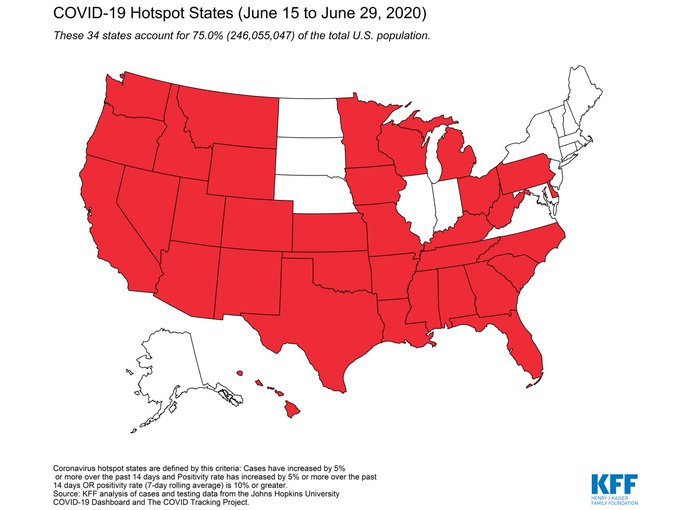
Getty A man wears a face mask as he check his phone in Times Square on March 22, 2020 in New York City.
As cases of coronavirus continue to rise in the U.S, 34 states are now considered hotspots. According to the Kaiser Family Foundation that means 75% of Americans are living in a COVID-19 hotspot.
The reasons for the continued growth are varied. The KFF said possible reasons for so many cases include the duration of stay at home orders possibly being lifted too soon; not really using social distancing measures effectively; people being out and about more due to warming weather; holiday travel and the George Floyd protests.
Essentially, the virus has had plenty of opportunities to continue to spread.
The KFF explains the hotspots are defined by the following criteria: “Cases have increased by 5% or more over the past 14 days and the positivity rate has increased by 5% over the past 14 days OR positivity rate (7-day rolling average) is 10% or greater.”
The KFF came to its conclusion by analyzing the Johns Hopkins University Coronavirus map and the COVID Tracking Project.
Dr. Fauci Said Tuesday Cases Could Go Up to 100,000 a Day & He Is Very Concerned

GettyDr. Anthony Fauci, director of the National Institute of Allergy and Infectious Diseases, speaks during a Senate Health, Education, Labor and Pensions Committee hearing on June 30, 2020 in Washington, DC. Top federal health officials discussed efforts for safely getting back to work and school during the coronavirus pandemic.
The New York Times reports that new COVID-19 infections have gone up 80% over the last two weeks in the U.S, and speaking before congress Tuesday Dr. Anthony Fauci told members of the Senate Health, Education, Labor and Pensions Committee, “We’ve really got to do something about that and we need to deal with it quickly,” he said. “It could get very bad.”
“We are now having 40-plus thousand new cases a day,” Fauci said. “I would not be surprised if we go up to 100,000 a day if this does not turn around. And so I am very concerned.”
And while Fauci fears a continued increase in cases, the CDC said last week that they suspect there have been 20 million more COVID-19 cases than reported.
One reason cited is that many people didn’t have symptoms or their symptoms were so mild they did not seek medical attention. Another reason is that people may have been sick before testing was available on a mass scale so they were unable to be tested.
Dr. Robert Redfield, director of the Centers for Disease Control and Prevention, said in a media conference call, “Our best estimate right now is that for every case that was reported, there actually are 10 more infections,” according to the Associated Press. The estimates are based on blood samples collected nationwide.
Even though there are some who don’t have symptoms, “There’s an enormous number of people that are still vulnerable,” Dr. Joshua Sharfstein, vice dean at the Johns Hopkins Bloomberg School of Public Health told the AP. “It still remains a potentially lethal disease. It’s a roll of the dice for everybody who gets the illness. Also, you’re rolling the dice for other people who you may give the virus to.”
States Are In a Variety of Stages of Coronavirus Mandates But The Virus Does Not See Borders

GettyPeople stand in freshly painted circles, six-feet-apart, as they wait in a two-hour line to buy marijuana products from Good Chemistry on March 23, 2020 in Denver, Colorado. Residents stock up on essentials before stores close for three weeks amid a shelter-in-place order starting Tuesday evening due to the coronavirus (COVID-19) outbreak. Denver Mayor Michael Hancock announced liquor stores and marijuana dispensaries would be allowed to stay open as long as they enforced extreme social distancing practices.
According to the KFF, the country is at varying levels of mandates that would work to slow the spread of COVID-19. The lack of uniformity may be part of the reason for the continuing increase in cases over the last weeks.
Dr. Fauci notes that the rise in cases puts the entire country at risk. “We’ve got to get that message out that we are all in this together,” Fauci said. “And if we are going to contain this, we’ve got to contain it together.”
One Twitter user responded to a tweet by KFF Executive Vice President for Health Policy, Larry Levitt, about the high number of people living in hotspots by saying our country wasn’t founded on principals that work well to fight a pandemic.
Pulling from the KFF’s data, they say that all 50 states plus D.C are in a declared state of emergency. Only six states still have their original stay at home orders in place and just six states still enforce their original mass gathering regulations.
Forty-six states have allowed some or all non-essential businesses to open and 50 states allow dine-in eating at restaurants.
Masks are required for the general public in 20 states, and for some state employees in 20 other states, but eight states do not require any kind of masks to be worn when in public spaces, while other states leave it up to local government bodies to mandate.

